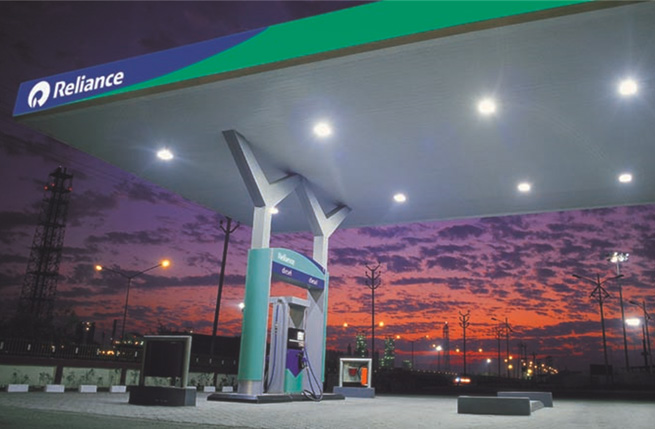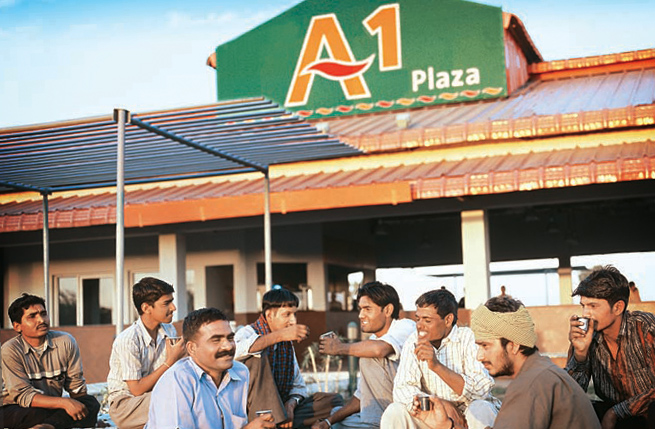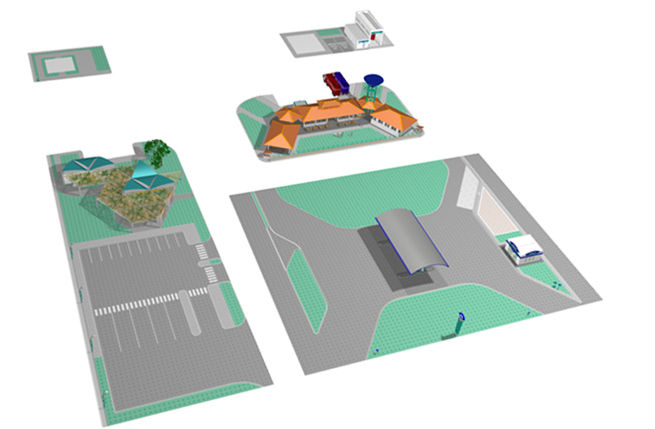
Vertically-inclined ambitions
Winning the pitch in 2001, here was a chance for Minale Tattersfield to create a ground up retail network for Reliance and to work first hand with the legendary entrepreneurial and visionary Ambani family. Within a generation and a half, Dhirubhai and his brother Ramniklal had managed to grow a textile business from scratch into India’s most respected and profitable privately owned conglomerate by pursuing a vertical acquisition strategy that allowed them to integrate the entire supply chain from oil extraction, refining and distribution to retail.
Fuelling the need for change
Reliance planned to enter the fuel retail market in 2004 to coincide with the planned deregulation of the politically sensitive oil industry. This gave Minale Tattersfield and the Reliance marketing and engineering team just three years to design, prototype, value engineer and build an entire network of stations, including land acquisition, dealer training and planning approval.
As new entrants, Reliance were keen to build upon their exemplary reputation and build an innovative and clearly differentiated network. Reliance were new to customer facing businesses but were nevertheless determined to be customer driven, particularly in regards to satisfying the needs and wants of truck drivers - a key opportunity highlighted during the network audit phase. Critical to its success was an unadulterated fuel supply plus excellent food and rest facilities.
Pumping up the appeal
Minale Tattersfield created an entire driver amenity centre where truck drivers could find hot food, toilet and shower facilities, banking and a communications hub. Some sites even had a small cinema and overnight sleeping accommodation.
The naturally ventilated, rustic style “Dhaba” formed the heart of the architectural style proposals and was constructed mainly from natural materials (not usually associated with petrol stations) to provide Indian truck drivers with a functional modern yet familiar environment.

The brand name “A1” for the Dhaba was devised which could be understood across all 14 official languages in India and across all levels of literacy. For the highway car and coach passenger demographic, a more sophisticated and Western-style food offer “Refresh” was created whilst for city dwellers a simple C-store.


Colour
In a multi-cultural country, colour plays an important role in the Reliance brand and across society generally, especially the flag colours orange (taken by many of the state competitors) and green. We devised a palette that was the best solution for the brand. Blue and green recall the colours of the peacock, India’s national bird, and together they communicate freshness and sophistication when applied to a fuel brand. They also differentiate Reliance from its competitors and lend an integrity to the brand that is vital in a market which has from time to time suffered from public mistrust. To differentiate food from fuel, the other flag colour orange was used.
Retail success within just two years
In the space of two years Reliance built a network that captured an astonishing 15% of sales volumes with just 3% of retail outlets. However, trouble lay ahead when, for political reasons, the Indian government refused to allow oil companies to pass on the escalating price of oil to the consumer resulting in Reliance having to close the network until market conditions became more favourable.
With the success of the early stages of the petrol station project, Minale Tattersfield were retained to create the identity and retail outlets for Reliance’s mobile telephone business which holds the record for achieving 1,000,000 customers in the quickest time.